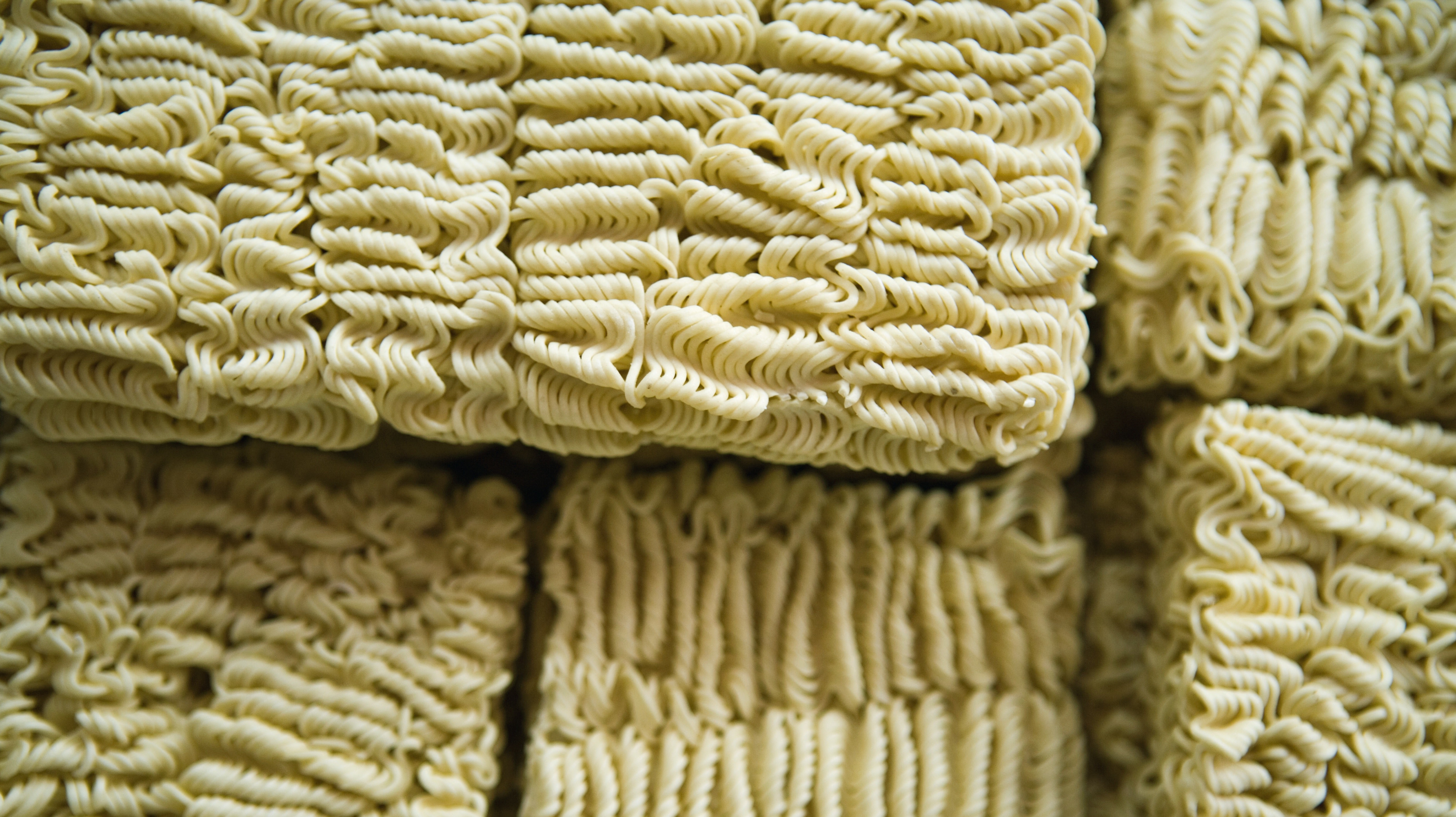Your Backyard Picnic Needs Ramen Noodle Salad, The Midwestern "Salad" That's actually A Salad
You won't find Ramen Noodle Salad on the menu at any restaurant. It's not one of your local grocery store's grab-and-go lunch options. You will find six different iterations of it in the same Midwest church cookbook, though, and you'll see semiprofessional photos of it on Pinterest—or maybe you're like me, and the recipe will come to you in an email forwarded by your mother from her sister, who got the recipe from her son-in-law's mother, who, by the way, is the same glorious woman who brought the world's best buffalo chicken dip recipe into your life at a wedding shower ten years ago. (Thanks, Vicki!)
Ramen Noodle Salad is strictly a backyard dish: a summertime salad that consists of cabbage—a pre-shredded, prewashed bag of coleslaw mix, naturally—along with slivered almonds, sunflower nuts (aka sunflower seeds without the shell), mandarin oranges, and occasionally chicken, tossed in a tangy dressing of oil, vinegar, and a bit of sugar. A package of uncooked Top Ramen noodles is then crushed into crouton-sized crunchy bundles and tossed into the salad to soak up the vinaigrette (the noodles grow soggier and more flavorful the longer they sit). This salad has four types of crunch and an unmatchable flavor profile. It's the salad that first introduced me to the idea that some salads could be craved instead of merely tolerated. This salad, unlike so many Midwest dishes that fly under the salad banner, is actually made of vegetables and, even more shockingly, contains no sour cream or mayo.
Seemingly every recipe blog that includes an entry on Ramen Noodle Salad cites the recipe as a longtime picnic and potluck staple, but its actual roots remain elusive. I can see it right there in my church cookbooks, in volumes published in 2011, 2003, and 1993, but not in any earlier volumes published by parishes within the same cluster of Chicago's Southwest suburbs. Nissin's Top Ramen was introduced in the United States in 1970; Maruchan arrived here from Japan two years later. The recipe doesn't appear in my 1976 copy of Sugar & Spice from the Ladies Auxiliary. How many years did it take domestic goddesses to start experimenting with these instant noodles, and when did those efforts finally trickle down to community cookbooks?
It would seem that we're all still experimenting, by the way. My mom made some tweaks to the recipe that her sister sent her, and my husband and I have some variations of our own. There is no blanker canvas than cabbage, and we've all got a version of Ramen Noodle Salad that works perfectly for us. I'm including the sweeter version of the recipe below, with notes about how our household has altered it for everyday healthy eating. If anyone out there has their own brilliant spin on this Midwest miracle, definitely let us know; I'll be sure to email the fresh intel to my mom, my aunts, my two cousins who cook, and my cousin's husband's mother, because I still owe Vicki big time for that buffalo chicken dip recipe.

Ramen Noodle Salad
Feeds 4-6
For the salad:
- 1 (14 oz.) bag coleslaw cabbage mix (get the kind with carrots and red cabbage included)
- 1 package uncooked Ramen noodles, crushed into small pieces (see note)
- ½ cup slivered almonds
- ½ cup dry roasted sunflower kernels
- 1½ cup chopped cooked chicken (optional; see note)
- 1 (11 oz.) can Mandarin orange slices (optional; see note)
For the dressing:
- ½ cup olive oil
- 3 Tbsp. white vinegar
- ¼ cup sugar (optional; see note)
- Ramen seasoning packet
- ¼ cup diced green onion
Combine all the salad ingredients and set aside. Whisk together all the dressing ingredients until combined. Toss the salad with the dressing just before serving. Can be served cold or at room temperature. This salad will keep in the fridge for a few days, though the noodles will get soggier each day. Not that that's a bad thing.
Notes
There are two schools of thought to this salad. If you'd like it on the sweeter side—and if you're serving it to kids, you probably do—then you can include the Mandarin oranges and keep the sugar in the dressing. I remove both of these elements, because I prefer this salad on the more savory side; the carrots and cabbage still impart a subtle sweetness.
I usually only include the chicken if I'm eating this salad as a main. In that case, a grilled chicken thigh sliced up on top is excellent, or any other cooked chopped chicken will do.
You can crush the dry ramen noodles between your hands, but if you find that it hurts to do so (they're often sharp!), you can place them on the counter inside a heavy duty Ziploc bag and add pressure with a rolling pin.
